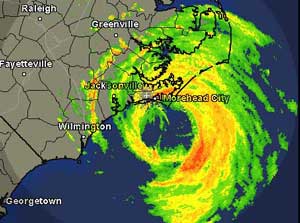Recently, I had a little rant about how silly it is to consider creationism a scientific theory, even under the guise of so-called “intelligent design theory.” When I read Stephen Meyer’s ID paper, I realized, after I stopped laughing, that some may be taken in by Meyer’s scientific mumbo-jumbo talk. Even with no clue about the scientific terminology he throws around, it was clear to me that this paper is complete bogus. Meyer purports to challenge evolution with the argument that Darwin’s heirs cannot explain everything in this world, only to then turn around and propose that some “intelligent designer” of whom we know nothing and have no evidence, is a better scientific explanation for life on earth.
An experience-based analysis of the causal powers of various explanatory hypotheses suggests purposive or intelligent design as a causally adequate–and perhaps the most causally adequate–explanation for the origin of the complex specified information required to build the Cambrian animals and the novel forms they represent. For this reason, recent scientific interest in the design hypothesis is unlikely to abate as biologists continue to wrestle with the problem of the origination of biological form and the higher taxa.
“The Origin of Biological Information and the Higher Taxonomic Categories” – Dr. Stephen C. Meyer, Proceedings of the Biological Society of Washington (volume 117, no. 2, pp. 213-239)
As laughable as this is, it is commendable that Alan Gishlick, Nick Matzke, and Wesley R. Elsberry took the time to systematically pick Meyer’s treatise apart. They come to the conclusion that Meyer simply does not understand very well the science he challenges:
There is nothing wrong with challenging conventional wisdom — continuing challenge is a core feature of science. But challengers should at least be aware of, read, cite, and specifically rebut the actual data that supports conventional wisdom, not merely construct a rhetorical edifice out of omission of relevant facts, selective quoting, bad analogies, knocking down strawmen, and tendentious interpretations. Unless and until the “intelligent design” movement does this, they are not seriously in the game. They’re not even playing the same sport.
Meyer’s Hopeless Monster – Proceedings of the Biological Society of Washington 117(2):213-239 – by Alan Gishlick, Nick Matzke, and Wesley R. Elsberry
Let me make one thing clear: I have no beef with folks who believe the Good Lord created the world in seven days and said it was good. No problem – I have my own creation myth, too. But do I pretend my creation myth is anything but a myth? Do I force it down the throat of students in science class? Even if I could – I would not! But Meyer’s pseudo-scientific polemic is part of a movement to advance the agenda of the reactionary theocrats who would like to turn back the time to the “good old days” when all bowed to the lord, everyone knew his place, and witches and heretics burned at the stake.
 More proof that saving the planet can be quite fun: the new Mercedes concept car “Bluetec Hybrid” is based on the new S-Class, and, as it is a diesel, it should run just fine on biodiesel.
More proof that saving the planet can be quite fun: the new Mercedes concept car “Bluetec Hybrid” is based on the new S-Class, and, as it is a diesel, it should run just fine on biodiesel.


